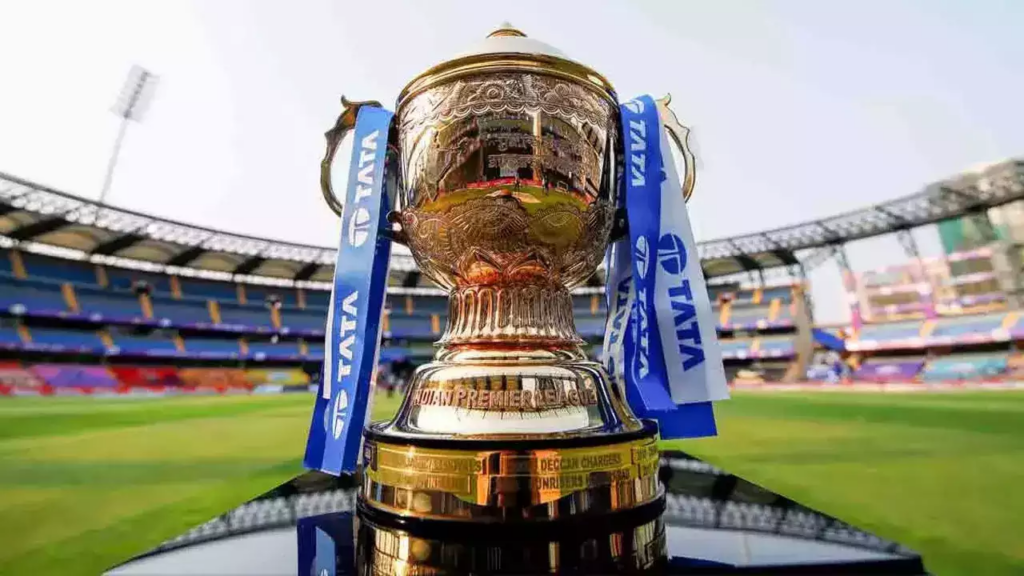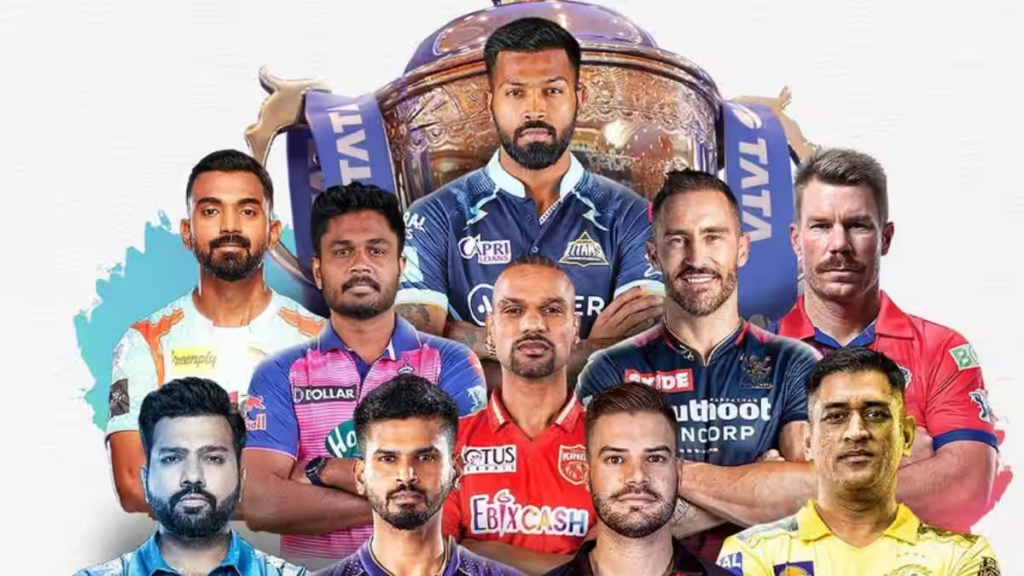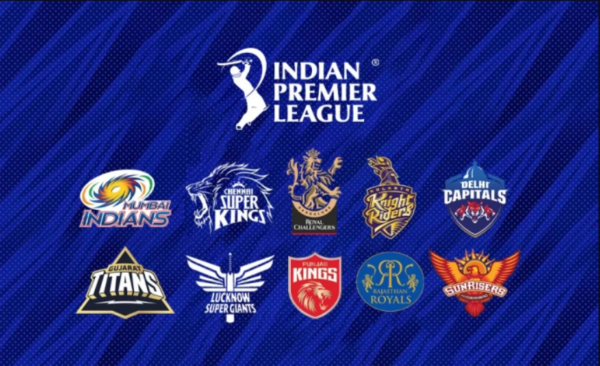The 16th IPL begins! As usual, the opening week was a succession of damp squibs, but Kolkata Knight Riders’ Rinku Singh sparked the competition this weekend by smashing the final five balls of the chase against Gujarat Titans for six. Since then, every tournament night has seen last-ball endings. Some first-season observations as the summer soap opera enters its second act.

Rare advertisers
IPL advertising reflects the nation’s mood each year. Late 2010s e-commerce giants. The 2020 epidemic halted life, but the IPL remained in a bubble. Online food ordering boomed as eateries closed, and food-tech startups bet big on the IPL. After TikTok was banned in India, short video platforms momentarily dominated sponsorship. Instant food, edtech, fantasy games, financial (Credit advertising!), and crypto followed. Clearly, all signals indicate India Inc. adopting new-age innovation with open arms.

I watched the IPL this year to observe tech progress. Then, pan masala manufacturers bombarded me with surrogate advertising. Bollywood heroes chewed silver grains between overs to show off their masculinity. Sports betting companies disguised as fantasy platforms and a few legitimate businesses share screen time with these brands. The IPL’s two primary advertising categories operate on the edge of ethics and law.
The Information and Broadcasting Ministry may be watching these sectors, but this column doesn’t. Questions about legality aside, the considerable drop of start-up cash coming into the IPL is a depressing reminder of the IT downturn and the financial winter.
Strike-rates again
T20 is the country with the highest inflation and lowest value of wickets. However, 20 years since T20’s origin, batters are still battling to find the correct degree of aggressiveness. Top-order Indian batsmen have accumulated risk-free run mountains for years. All these years, pundits would grin and bear painfully without pointing fingers. Not in 2023, though.
Harsha Bhogle criticized Shikhar Dhawan’s sluggish start against Rajasthan Royals. Twitter users criticized Bhogle of picking an easy target while ignoring larger celebrities. Next, New Zealander Simon Doull, a sharp commentator, accused Virat Kohli of purposely slowing down for his 50 in Royal Challengers Bangalore’s high-scoring loss to Lucknow Super Giants. Bhogle joined the chorus. Last week, KL Rahul, Rohit Sharma, and David Warner were criticized for sluggish batting.

Chris Gayle, the first Bradman of T20, showed how it’s done: play out dangerous bowlers conservatively, don’t play reckless singles, and knock out the opposition’s weak links with crisp range-hitting. AB de Villiers, Jos Buttler, and early Hardik Pandya used it well. It’s frustrating to see openers score run-a-ball 30s in hopes of “making up” with huge hits if they bat deep. One hopes IPL hitting adjusts sooner to the sport.
An IPL 50 is unlikely to slow down Kohli. It’s refreshing to see pundits criticize India’s holy cows, regardless of their authenticity. Long live this new spine.
Bad squads everywhere
Bangalore, Punjab, and Chennai lack middle orders and pace. Mumbai are listless without Jasprit Bumrah and Jofra Archer, and their bench can’t cover Suryakumar Yadav’s poor form. Lucknow has a cautious lower half, while Delhi and Hyderabad have questionable top orders. Gujarat and Rajasthan may have the most balanced teams, yet Rajasthan Royals are compelled to play R. Ashwin as a top-order batsman, while Gujarat Titans’ best bet for their tragic 20th over against Kolkata was Yash Dayal.
I think eight IPL teams is ideal. High-quality cricketers in India and abroad are few. Ten teams diluted talent. Every squad in this competition is faulty.
Though faulty, the teams are evenly matched. Thus, even when cricket is poor, it is always entertaining. After a poor first week, we’ve had four consecutive last-ball finishes. Rinku Singh’s jailbreak in the Kolkata-Gujarat match on April 9, 2023, and Harshal Patel’s failed Mankad off the penultimate ball against Lucknow would be remembered for decades. May the enthusiasm continue, but surely we can have the same with eight teams and higher-quality cricket?
New legislation affects
Impact Substitute improves the game. Since replacements haven’t always contributed much, analysts say the legislation hasn’t changed much. That’s a simple worldview. The mid-game substitution impacts the way the other 11 players play the game.
Teams can bowl specialized bowlers for 20 overs without using moderate allrounders. Shivam Dube, Rahul Tewatia, and Vijay Shankar will not bowl much this year. Prithvi Shaw, Sarfaraz Khan, and Ambati Rayudu will only play half the game, which is good. Chennai lost Deepak Chahar one over into his term against Mumbai, while Gujarat lost Kane Williamson following a fielding error in the first game. Teams now have a buffer against freak injuries that previously limited them to 10 players.
Player reviews for wides and no-balls are another law reform. It’s like using a flamethrower to capture a housefly in cricket—its worth is little. MS Dhoni protested a no-ball in the closing overs of a CSK chase in 2019. Last year, Delhi Capitals coach Praveen Amre challenged a close no-ball. Rare occurrences should have been chastised more. Lawmakers have done the opposite.
Like wickets and boundary calls, minor extras seldom affect results. Tactically, these assessments are employed in hope. They want the third umpire to make a fair call on a hazy judgment call. This destroys T20 momentum unintentionally. Thus, an essential question…
Fan involvement?
We’ve all heard about Chennai and Bangalore ticket seekers’ awful turnstile experiences. Fans are forced to wait overnight and under the sun in jail-style files without food, drink, kindness, or consideration, with the possibility of a police swat. Most go home empty-handed. IPL teams must reserve a considerable number of seats for sponsors and local clubs and sell few tickets.
Enough about the grounds. Shouldn’t TV and live-streaming put fans first? The IPL is a summer event for all ages. Not exactly. This is the tournament that included 10 minutes of “strategic time-outs” to run extra advertising. Add to this the inevitable in-game delays in fiercely contested T20s, and now the slovenly ruling of no-ball reviews, and most IPL games conclude well past midnight, making it hard for working professionals or students to watch. The BCCI won’t do anything about this, but broadcasters and advertisers are unhappy about audience declines. The organizers may reconsider these selections if they risk losing money.

